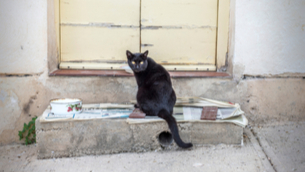Past Perfect + Infinitive Constructions
I. Intro
Remember our lesson on the present perfect? If you’re a little fuzzy, it might be a good idea to brush up on it before starting this lesson. If you have a basic grasp on the present perfect, the past perfect is a breeze.Let’s quickly review the basics.
The present perfect tense is a compound verb tense that uses two verbs in its construction – haber + a main verb in the past participle (the -ado/-ido form). It expresses the idea that something “has happened” very recently (namely today), or at an undetermined time before the moment of speaking. This is contrasted by the preterite tense, where the time that the event occurred is known by the speaker. In the present perfect, the present tense of the verb haber is used:
Haber
| he | hemos |
| has | |
| ha | han |
| He estado muy ocupado esta semana. I have been very busy this week. ¿Nunca has visto esta película? No me lo creo. You’ve never seen this movie? I don’t believe it. |

























